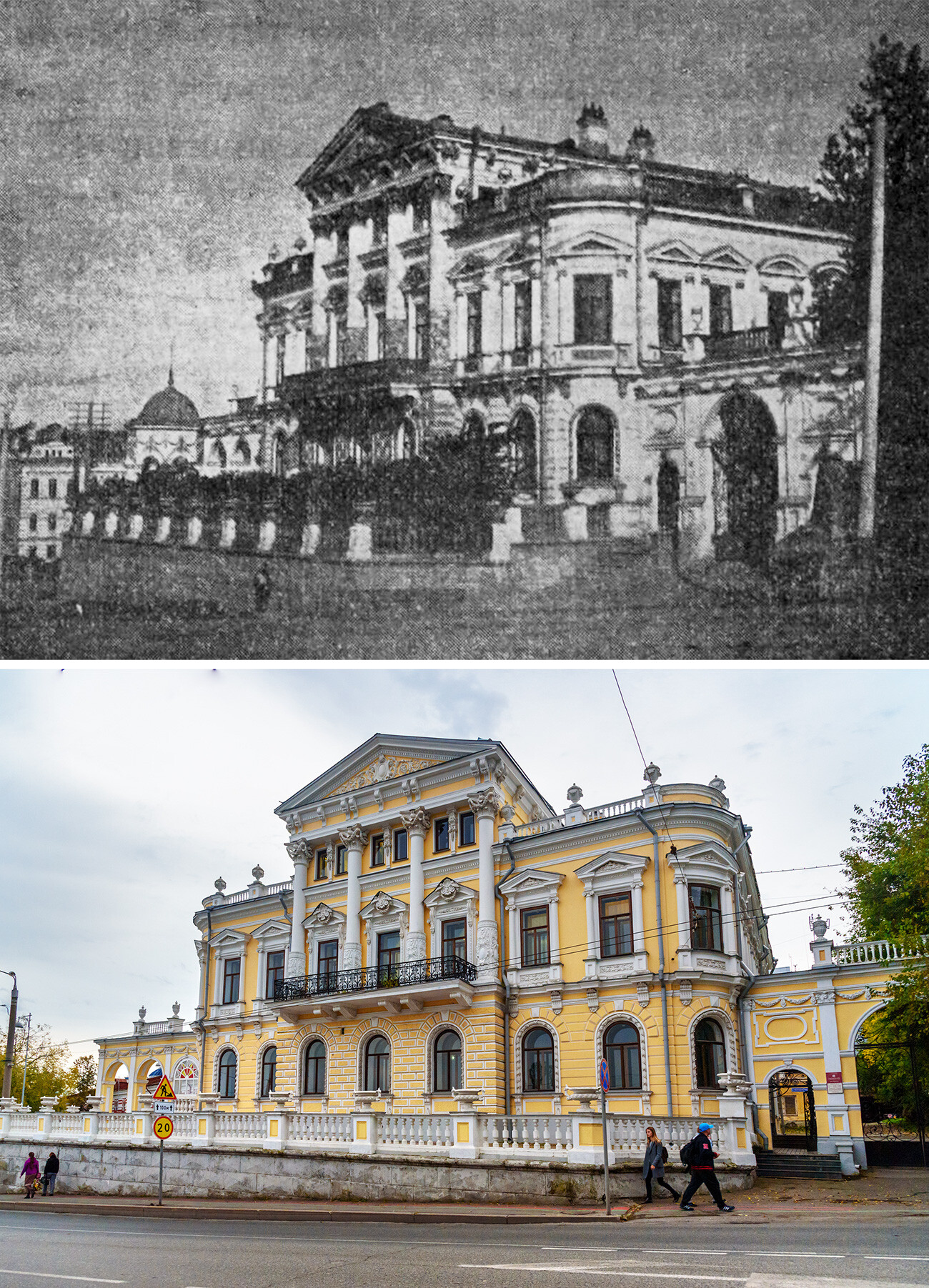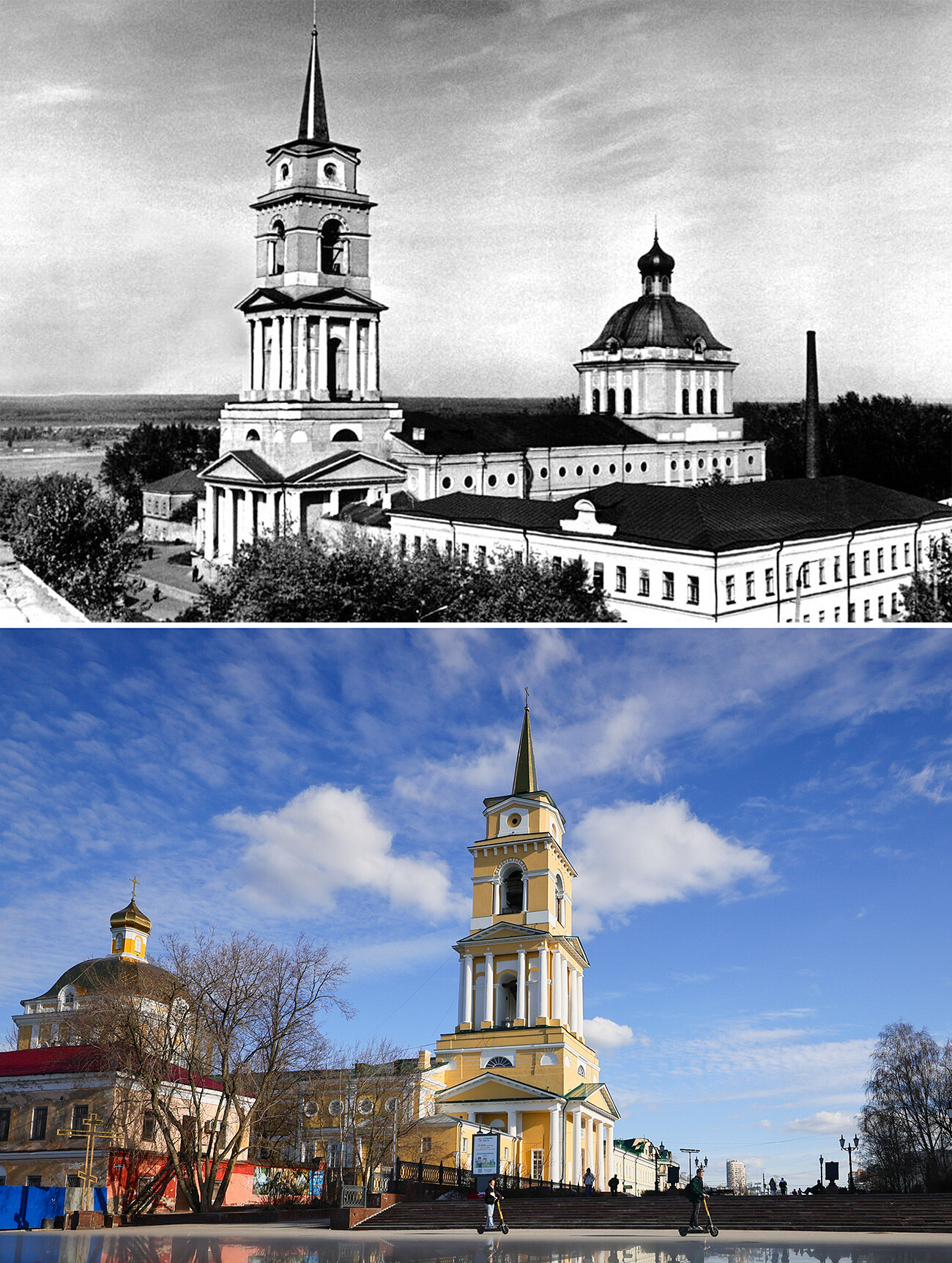Perm: How the Ural megapolis has changed over 300 years (PHOTOS)

1. The old Ural city of Perm on the Kama River celebrates its 300-year anniversary in 2023. Its history began with the construction of the Yagoshikha copper-smelting works on May 15, 1723 (on May 4 by the old calendar). It operated for only 60 years, due to ore depletion; however, the workers’ settlement, which appeared around the works, became the starting point for the whole city. In the middle of the 19th century, the population of Perm amounted to 20,000 people; today it’s home to more than a million people.
 A view of Perm.
A view of Perm.
2. Perm became an important transport hub already in the first half of the 19th century. By the Ural rivers Chusovaya and Kama, not just iron and other metal wares went to the European part of the Russian Empire. Salt was the main commodity, mined in large amounts in Perm Governorate (even the names of the cities point to their “salty” – “sol” in Russian – roots: Usolye, Solikamsk).
 General view.
General view.
3. In 1899, Perm saw the opening of the first (and the longest – 840 meters) railway bridge in the Urals over the Kama River. At that time, the railway led from Perm to the town of Kotlas in Arkhangelsk Region (almost 900 kilometers!). The bridge spans were restored in the 1920s (due to damage during the Civil War) and during the repairs at the end of the 1980s. The bridge is still operational.
 Bridge over Kama.
Bridge over Kama.
4. One of the main city-forming enterprises of Perm – the Motovilikha Plants, built back in 1736. The first open hearth furnace in the region was launched in it and it also produced artillery for the army of the Russian Empire.
In the Soviet era, the Motovilikha Plants didn’t only manufacture artillery (it produced a fourth of all artillery systems of the Red Army during World War II), but also engaged in machine building for agriculture and in manufacturing oil equipment (Perm has the largest oil refining plant).
 Motovilikha.
Motovilikha.
5. During the years of World War II, more than 120 industrial enterprises were evacuated to Perm (and its region); it became one of the key industrial centers of the USSR.
Despite this, historically, Perm has also always been the cultural capital of the Urals.
 A view from the Kama River.
A view from the Kama River.
6. The Perm Opera and Ballet Theater, founded in the 1870s, bears the name of composer Pyotr Tchaikovsky. This is the only theater in Russia where all 10 of his operas and three ballets were staged. During World War II, Mariinsky Theater actors, evacuated to Perm, performed in this theater. Today, you can visit it and still watch timeless classics.
 The Perm Opera and Ballet Theater.
The Perm Opera and Ballet Theater.
7. Wherever you go in Perm, you’ll find houses with rich history! This majestic mansion on Monastyrskaya Street, built in the Classicism style in the 1880s, in reality, is the museum of local history. The lounge room of this mansion often hosts music nights.
 The Meshkov Mansion.
The Meshkov Mansion.
8. The Perm Art Gallery is located in the Spaso-Preobrazhensky Cathedral of the middle of the 18th century. The cathedral was turned into an exhibition space in 1922, when the Bolsheviks began fighting against the manifestations of religion. In the art gallery, you can see unique wooden sculptures that depict various Christian saints.
 Perm Art Gallery.
Perm Art Gallery.
9. In 1940, Perm was renamed Molotov. The change happened in honor of the 50th birthday of the Chairman of the Council of People’s Commissars, Vyacheslav Molotov. The city was restored to its historical name in 1957 in the wake of disagreements between Molotov and Khrushchev.
 Komsomolsky Prospekt.
Komsomolsky Prospekt.
10. The Kama River embankment remains the favorite walking route for locals and tourists alike. It stretches almost four kilometers. Three descents lead to it: near the River terminal, near the Cathedral Square and the Kommunalny Bridge. Walking alleys are located on different levels. The main photo spot of today are giant letters that read: “Schastye ne za gorami” (“Happiness is just around the corner”, directly translated “Happiness is not beyond the mountains”), which appeared in 2009. By the way, the Dvina River beach in Arkhangelsk has its own “answer” to it – “Schastye ne za moryami” (“Happiness is not beyond the seas”). But, that’s a different story!
 The Kama River embankment.
The Kama River embankment.

